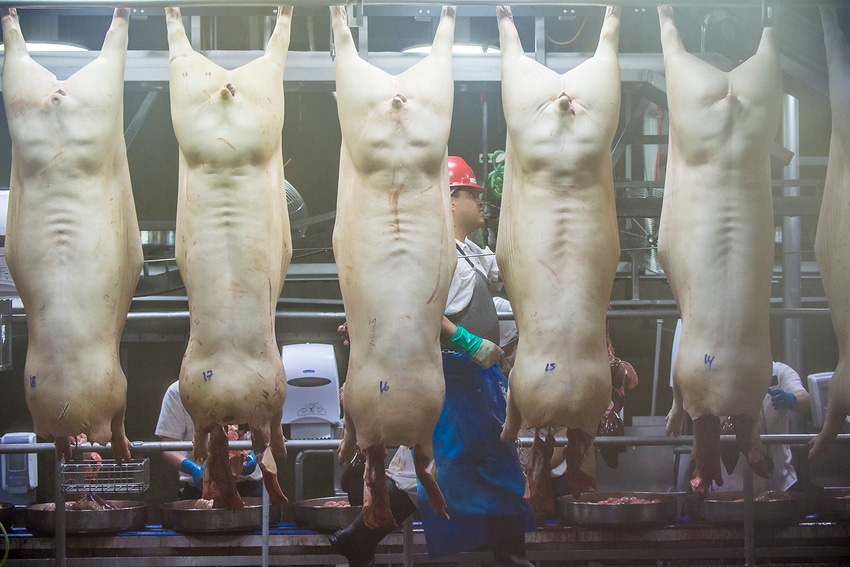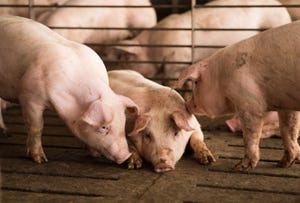Stamp of approval given to modernized swine inspection proposal
The proposed New Swine Slaughter Inspection System has been used as a pilot project in five pork plants for 15 years, and it has proven to be a strong inspection model.
January 19, 2018

Today’s USDA’s Food Safety and Inspection Service’s announcement to propose to amend the federal meat inspection regulations to establish a new voluntary inspection system for market hog slaughter establishments was met by approval from the National Pork Producers Council and the North American Meat Institute.
In addition to USDA’s announcement of the proposed New Swine Slaughter Inspection System, the USDA will also require additional pathogen sampling for all swine slaughter establishments.
The NPPC strongly supports the expansion of the USDA’s FSIS HACCP Inspection Model from five current pilot locations to full-scale implementation.
“We support the USDA’s decision to advance HIMP as it introduces new pork production efficiencies while encouraging the deployment of new food safety technologies in packing plants,” says NPPC President Ken Maschhoff, a pork producer from Carlyle, Ill. “The pilot program yielded very positive results; expanding the program is another step forward in the industry’s ongoing focus on continuous improvement of food safety and cost efficiency.”
The proposed rule also allows innovation and flexibility to establishments that are slaughtering market hogs. Market hogs are uniform, healthy, young animals that can be slaughtered and processed in this modernized system more efficiently and effectively with enhanced process control.
For market hog establishments that opt into NSIS, the proposed rule would increase the number of offline USDA inspection tasks, while continuing 100% FSIS carcass-by-carcass inspection. These offline inspection tasks place inspectors in areas of the production process where they can perform critical tasks that have direct impact on food safety.
“FSIS is excited to continue modernizing inspection practices, while allowing opportunities for industry to innovate and streamline food production,” says Acting Deputy Under Secretary for Food Safety Carmen Rottenberg. “There is no single technology or process to address the problem of foodborne illness, but when we focus our inspections on food safety-related tasks, we better protect American families.”
NAMI appreciates the science-based approach to maintaining and improving pork safety. “While we will thoroughly review the Food Safety and Inspection Service’s newly published proposal to amend the pork inspection regulations before providing substantive comments to the agency, the North American Meat Institute has long supported adopting science-based inspection models that better utilize government resources while maintaining strong food safety standards,” says NAMI President and CEO Barry Carpenter. “The proposed New Swine Slaughter Inspection System has been used as a pilot project in five pork plants for 15 years, and it has proven to be a strong inspection model. Those five pilot plants have produced millions of pounds of safe pork. We look forward to working with the agency as it develops a final rule that maintains a strong level of food safety in the most efficient manner.”
In this proposal, USDA would also amend the regulations that apply to all establishments that slaughter swine. The new requirements would ensure that establishments implement measures to control enteric pathogens that can cause foodborne illness. Specifically, all swine slaughter establishments would be required to implement appropriate measures to prevent contamination throughout the entire production process in their Hazard Analysis and Critical Control Point plans, Sanitation Standard Operating Procedures or other prerequisite programs. The new requirements would ensure that both USDA and the establishment have the documentation they need to verify the effectiveness of these measures on an ongoing basis.
The new inspection model assigns increased inspection responsibility to plant operators, allowing the USDA to dedicate its resources to general oversight of food safety standards and the overall inspection process. Plants can choose to adopt the HIMP model or continue operating under the current inspection system.
Maschhoff adds, “The U.S. pork industry is the most competitive in the world because we have built a reputation for quality, affordability and food safety. We applaud the USDA for taking this step to strengthen our competitive position.”
There will be a 60-day period for comment once the rule is published in the Federal Register.
Click here to view the proposed rule and to find more information on how to comment on the rule on the FSIS website.
You May Also Like



